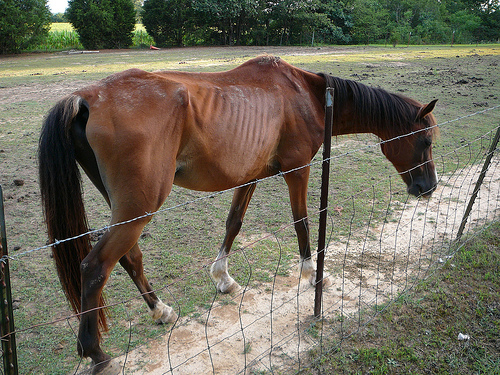Animal Abuse Pictures Biography
Geckos (Gekkonidae) are a group of lizards that include about 930 species. Among the more common species of geckos are the tokay gecko, crested gecko, gargoyle gecko, dwarf gecko, leopard gecko, mediterranean gecko, western banded gecko, and the New Caledonian gecko.Many geckos are agile climbers with uniquely evolved toe-pads that enable them to climb a variety of surfaces with ease. In fact, geckos' feet are among their most distinctive characteristics—nearly every species of gecko has specially adapted feet that are tailored to their particular lifestyle and locomotion. For example, geckos that climb have flattened, disc-shaped toe-pads. Each toe-pad consists of numerous scales that are fringed with thousands of minute hairs called setae. The setae split into smaller hairs and these interact with surfaces to form weak molecular bonds that enable geckos to adhere to slick surfaces with ease.
Geckos are also notable for the vocalizations they produce. Their calls enable them to declare their territory and to attract mates, especially since these small lizards are most active during the nighttime when sound provides an optimal means of communication.
Most geckos are petite, slender-bodied lizards that have a broad, flat head. Many geckos are tree-dwelling creatures but some species inhabit rocky or arid habitats.
Diet:
Most geckos are nocturnal hunters that feed on insects, spiders and other small invertebrates. The tokay gecko is a large species whose diet includes heftier prey such as small lizards, birds and mammals. Day geckos feed on insects but also bolster their diet with pollen, fruit and flower nectar. Geckos locate on their food using a combination of sight and smell.
Classification:
Geckos are lizards, a group of reptiles that (in addition to geckos) includes iguanas, chisel-teeth lizards, chameleons, night lizards, blind lizards, skinks, anguids, beaded lizards and many others. There are 88 subgroups (genera) of geckos that include species such as the banded gecko, leopard gecko, tokay gecko and the frilled leaf-tail gecko.
Evolution:
The fossil record for squamates, including geckos and other lizards, is relatively poor. Geckos are thought to have evolved during the early Cretaceous. The oldest know gecko in the fossil record is Hoburogekko.
Tuataras (Rhynchocephalia) are a rare group of reptiles that inhabit the rocky islands off the coast of New Zealand. Today, tuataras are the least diverse group of reptiles, with only two living species.
Tutataras were once more widespread and diverse than they are today. Fossil evidence shows that their range once included present-day Europe, Africa, South America and Madagascar. There were as many as 24 different genera of tuataras but most of those disappeared by about 100 million years ago.
Tuataras are nocturnal burrowing reptiles that inhabit coastal forests where they forage over a home range and feed on bird eggs, chicks, invertebrates, amphibians, and small reptiles. Since they are cold-blooded and live in cool habitats, tuataras have low metabolic rates. They grow slowly and have a long lifespan. Tuataras are known to reproduce until they are 60 years old. No one knows exactly how long they live beyond that.
Tuataras have two rows of teeth in their upper jaw and one row of teeth in their lower jaw. This arrangement of teeth is unique to tuataras. Tuataras have a parietal eye, a light-sensitive spot located on the top of the animal's head which is thought to play a role in setting circadian rhythms.
Classification:
Tuataras are one of four basic groups of reptiles. Like crocodilians and squamates, tuataras are diapsids, a group of reptiles that possess two holes (or temporal fenestra) on each side of their skull.
Evolution:
The first tuataras appeared during the Mesozoic Era, about 220 million years ago, about the same time the first dinosaurs appeared. The closest living relatives of the tuataras are the squamates.
Related Articles
Hidden-necked turtles (Cryptodira) are the more diverse of the two modern groups of turtles, with more than 200 species. The other main group of turtles, the side-necked turtles, consists of about 76 species.
Hidden-necked turtles are distinguished from side-necked turtles by the way they fold their neck into their shell. Hidden-necked turtles retract their neck inwards along the axis of the spine, curving it in an S shape along the spinal plane so that their head moves directly into the shell. Side-necked turtles, in contrast, fold their neck and head sideways and tuck it under the edge of the shell closer to the shoulder so that the head and neck bend at an angle relative to the axis of the spine.
Hidden-necked turtles also differ from side-necked turtles in the structure of their carapace and plastron. The carapace and plastron of hidden-necked turtles are rounder relative to those of the side-necked turtles, whose carapace and plastron are more oval in shape. Additionally, the bones and scutes take on different arrangements in the two clades of turtles.
Classification:
Animals > Chordates > Reptiles > Turtles > Hidden-Necked Turtles
There are 11 families of hidden-necked turtles some of which include seaturtles, pond turtles, American mud and musk turtles, tortoises and softshell turtles. In total, there are more than 200 species of living hidden-necked turtles.
Evolution:
The first turtle-like reptiles appeared during the late Triassic, about 220 million years ago. The earliest known turtle that was equipped with a compete shell is Proganochelys, a creature that roamed the earth during the late Triassic. Another ancient turtle was Odontochelys which had a semi-soft carapace. Hidden-necked turtles arose and diversified during the Jurassic, displacing side-necked turtles from many of their aquatic habitats.
Animal Abuse Pictures Animal Pictures for Kids with Captions to Color funny Hd To Print with Funny Captions with Quotes to Draw
 Animal Abuse Pictures Animal Pictures for Kids with Captions to Color funny Hd To Print with Funny Captions with Quotes to Draw
Animal Abuse Pictures Animal Pictures for Kids with Captions to Color funny Hd To Print with Funny Captions with Quotes to Draw
 Animal Abuse Pictures Animal Pictures for Kids with Captions to Color funny Hd To Print with Funny Captions with Quotes to Draw
Animal Abuse Pictures Animal Pictures for Kids with Captions to Color funny Hd To Print with Funny Captions with Quotes to Draw
 Animal Abuse Pictures Animal Pictures for Kids with Captions to Color funny Hd To Print with Funny Captions with Quotes to Draw
Animal Abuse Pictures Animal Pictures for Kids with Captions to Color funny Hd To Print with Funny Captions with Quotes to Draw
 Animal Abuse Pictures Animal Pictures for Kids with Captions to Color funny Hd To Print with Funny Captions with Quotes to Draw
Animal Abuse Pictures Animal Pictures for Kids with Captions to Color funny Hd To Print with Funny Captions with Quotes to Draw
 Animal Abuse Pictures Animal Pictures for Kids with Captions to Color funny Hd To Print with Funny Captions with Quotes to Draw
Animal Abuse Pictures Animal Pictures for Kids with Captions to Color funny Hd To Print with Funny Captions with Quotes to Draw
 Animal Abuse Pictures Animal Pictures for Kids with Captions to Color funny Hd To Print with Funny Captions with Quotes to Draw
Animal Abuse Pictures Animal Pictures for Kids with Captions to Color funny Hd To Print with Funny Captions with Quotes to Draw
 Animal Abuse Pictures Animal Pictures for Kids with Captions to Color funny Hd To Print with Funny Captions with Quotes to Draw
Animal Abuse Pictures Animal Pictures for Kids with Captions to Color funny Hd To Print with Funny Captions with Quotes to Draw
 Animal Abuse Pictures Animal Pictures for Kids with Captions to Color funny Hd To Print with Funny Captions with Quotes to Draw
Animal Abuse Pictures Animal Pictures for Kids with Captions to Color funny Hd To Print with Funny Captions with Quotes to Draw
 Animal Abuse Pictures Animal Pictures for Kids with Captions to Color funny Hd To Print with Funny Captions with Quotes to Draw
Animal Abuse Pictures Animal Pictures for Kids with Captions to Color funny Hd To Print with Funny Captions with Quotes to Draw
 Animal Abuse Pictures Animal Pictures for Kids with Captions to Color funny Hd To Print with Funny Captions with Quotes to Draw
Animal Abuse Pictures Animal Pictures for Kids with Captions to Color funny Hd To Print with Funny Captions with Quotes to Draw









"pictures for kids with captions to color funny Hd to print with funny captions with quotes to draw"
ReplyDeleteare
are you ok